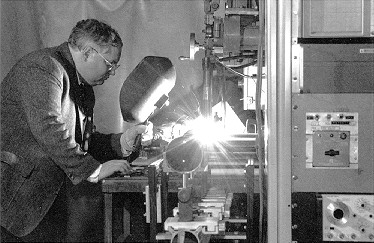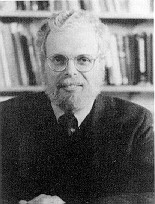
ENERGY EFFICIENCY in INDUSTRIAL
PROCESSING and BUILDING
MIT Energy Laboratory
 |
Current Research:
ENERGY EFFICIENCY in INDUSTRIAL PROCESSING and BUILDING MIT Energy Laboratory |
Since 1985, MIT has had a multi-project collaborative program with the Idaho National Engineering Laboratory, with funding from the Department of Energy/Basic Energy Sciences, to improve energy-intensive metals processing technologies. Improved welding technology and structural integrity are important in manufacturing many products, for example, automobiles, ships, pipelines, storage vessels, and reactor vessels. One set of collaborative projects has made a series of improvements to automated welding technology through modeling and experimental work to develop new understanding of the metals-joining processes. Activities have included exploring new techniques for generating a multiphase droplet stream of weld material, improving sensor technology to detect critical weld parameters, and designing controls to optimize the process. Another set of projects is concerned with the mechanics of how solids fracture under stress. Studies of surface crack propagation have led to improved understanding of elastic-plastic failure modes and have resulted in advances in design standards for critical structures.

Research on improved techniques for process design in the chemical and related industries has a long history at MIT, dating back to the late 1970s when Energy Laboratory researchers developed the prototype version of the Advanced System for Process Engineering (ASPEN). This software has been successfully commercialized and is widely used in the chemical industry today. Energy Laboratory researchers continue to work with ASPEN PLUS(tm) as a platform for advanced modeling of mass and energy flows within a variety of complex process sequences. Recent work has extended traditional process models to include characterizations of waste streams and emissions for use in process improvement and in the development of cleaner technologies. Decisionmaking about "preferred" technologies becomes more complex when the trade-offs include a multiplicity of factors such as cost; recyclability; quality; product life and marketability; and safety, environmental, and health impacts associated with manufacture, use, and disposal. New multi-attribute techniques are being developed to help decisionmakers and other stakeholders examine the trade-offs associated with feasible alternatives.

More than one third of the total energy and two thirds of the total electricity consumed in the United States is used in the buildings sector. Recent studies suggest that energy use in buildings could be cut by a third by the year 2015 through greater use of technologies that are commercially available and cost effective. The Energy Laboratory performs research on Building Technology in collaboration with MIT's Building Technology Program. This interdisciplinary program seeks to improve the energy efficiency of buildings by applying advances in science and technology while protecting the quality of the air inside as well as outside the building. The program involves participants from the Energy Laboratory; the departments of Architecture, Civil and Environmental Engineering, and Mechanical Engineering; the Center for Construction Research and Education; the Laboratory for Electromagnetic and Electronic Systems; and the Laboratory for Manufacturing and Productivity.
One efficiency-related goal is to develop better materials of construction. Research is under way on appropriate materials for energy-efficient buildings in developing countries. One project involves insulation materials that are made from available waste materials in Third World countries and that can be used in the retrofit of existing buildings or in new construction. Research is also under way on closed-cell foam insulation to improve its performance and also to permit its manufacture without use of chlorofluorocarbons, which deplete the ozone layer. Also under development is an advanced vacuum insulation that promises to be two to five times more efficient than current foam insulations.
Ventilation of buildings strongly affects indoor air quality, the thermal comfort of occupants, and building energy use. Building Technology researchers are studying building ventilation in three related programs: scale-model and full-scale laboratory studies, computational fluid dynamics studies, and field investigations of ventilation control systems. Scale-model studies have revealed buoyancy-driven circulation patterns not predicted by studies performed elsewhere. These results suggest strategies for controlling air circulation in rooms in patterns that improve air quality by stratifying pollutants and heat--an approach that does not sacrifice thermal comfort because air temperatures near the floor remain cool. Computational studies have examined trade-offs among various ventilation systems in office spaces and in large indoor spaces such as atria and auditoria. Field studies have quantified the substantial energy savings due to more effective control of air-circulation fans. Study of indoor air quality in apartments has shown that carbon monoxide and carbon dioxide are heavily influenced by living patterns such as cooking and occupant behavior.
 |
Computational fluid dynamics can be used to study air flow in buildings. Displacement ventilation involves admitting cold air slowly at floor level. The air moves slowly upward, and buoyant plumes of hot pollutants rise to the ceiling levels. In the computational results shown for displacement ventilation there is a strong temperature change with height. |
 the Energy
Laboratory Home Page.
the Energy
Laboratory Home Page.